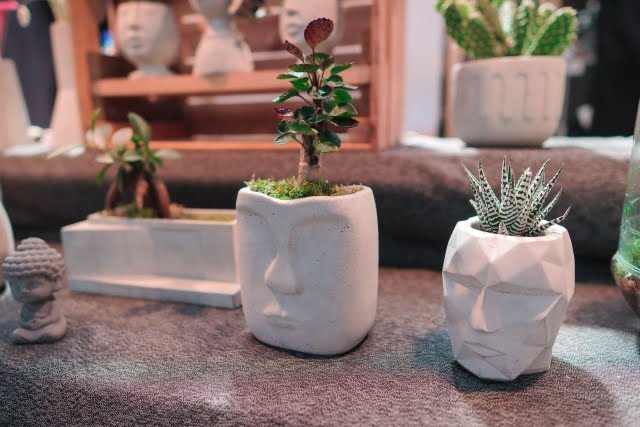Introduction
Feng shui is a Chinese philosophical practice centered around creating harmonious and balanced settings that promote wellbeing. It has been used throughout Chinese history since 2700 BCE, as its roots are embedded in Taoism, which encourages the creation of peaceful living spaces that affect the energy of those who enter it. The key principle of feng shui is to seek harmony with the environment by using positive energy or “chi” to balance the components of a space through arranging objects, activities and even plants. Plants used in Feng Shui should be chosen carefully as different species can bring various benefits to a living room according to the principles of feng-shui.
Benefits of Incorporating Plants Feng Shui in the Living Room
The ancient practice known as Feng Shui combines the science of placement with living energy to create a harmonious living space. Introducing plants into this equation is an excellent way to bring balance, grounding, and beauty into the home. The usage of plants Feng Shui in the living room helps to create a positive atmosphere and can have numerous beneficial effects on people’s mental health.
Not only are plants capable of providing aesthetic benefits, they have been shown to increase air quality by filtering out pollutants, which can help boost alertness, mood and productivity levels. Research has found that exposure to houseplants can reduce stress, fatigue and aid in relaxation—all of which can help improve mental clarity, reduce anxiety and create feelings of well-being.
The act of caring for a living thing like a houseplant also encourages mindfulness—a state of focused attention that helps diminish negative emotions such as stress and anxiety. Caring for plants also offers an outlet for creativity—you can rearrange your feng shui inspired greenery based on what brings balance and joy into your home! Finally, surrounding yourself with natural elements can provide a sense of connection with nature which has been proven to be restorative for mental health.
Tips for Placing Plants for Feng Shui Balance
Fire Area:
In the Fire area, place plants that are strong, blunt, and sturdy to ward off energy loss. Consider a tall cactus, a bonsai tree with sharp edges, or other succulents such as stonecrops. These will help to keep energy in the living room.
Earth Area:
In the Earth area, place strong plants that make use of energy from this location since it is linked to energies that pertain to justice and fairness. Try using a plant like an agave or jade plant – both offer a strength of being that can offer balance.
Metal Area:
In the Metal area, opt for plants with round shapes and soft colours such as Chinese evergreen or calla lilys. They symbolize prosperity because they relate more to creative aspects versus authoritarian ones which might throw room harmony off its axis.
Water Area:
English Ivy is ideal for the Water area along with other “watery” plants like Lucky bamboo or Peace lilies due to their ability to cleanse bad energy away from living spaces. The same is true for any other rounded-shaped foliage that incorporates curves and smooth lines into them; this creates tranquillity and calmness in otherwise chaotic chamber atmospheres.
Plants That Are Beneficial to the Living Room
Cacti are beneficial to the living room because they help absorb and filter toxins in the air and provide moisture. Cacti can also bring balance and clarity to the living room, making it a calming and peaceful space. Herbs such as lavender, chamomile, or peppermint not only add a pleasant aroma to the space but they can also help promote relaxation while also helping reduce stress levels. Certain flowers such as mums, tulips, and roses increase oxygen levels indoors while adding natural beauty and color to the room. These flowers are said to bring peace and tranquility while creating positive energy in the home.
How to Create a Beautiful Living Space with Plants Feng Shui
Using plants to create a Feng Shui living space can be a fun and creative task that can result in a peaceful, inviting atmosphere. There are many ways one can incorporate plants into their living space for an impressive display of natural beauty. Here are some ideas for achieving a harmonious and inviting living room with the use of plants:
1. Start by introducing larger plant varieties such as ficus trees or palms to keep your corner spaces balanced.
2. Incorporate terrariums and hanging plants to bring depth and texture, making the look even more eye-catching.
3. Try adding air purifying plants for improved air quality in the home, making it even more comfortable for you and your guests.
4. Craft unique artwork with vines, herbs, and flowers–creating a unique wall hanging or garland will provide precious elegance to your home’s interior design.
5. Include some smaller vegetation throughout the room—try using ornamental succulents or cacti along shelves or tucked amongst books to add distinctive charm from every angle around the room.
6. Get creative and emphasize symmetry with planters of various sizes spread out across tables and other surfaces in the living area – this encourages energy flow throughout the entire abode!
Conclusion
The use of plants in a living room offers far more than simple decoration; it provides the opportunity to infuse your living space with serenity and tranquility. Plant-filled rooms are known to reduce stress levels and bring about a sense of calm, creating an environment that encourages meaningful conversation or a comfortable place for quiet reflection. An indoor garden can also help purify the air, reducing allergens like dust particles, pet dander, and smoke. Lastly, incorporating plant life into your space can add vibrant colors, unique shapes, and interesting fragrances to make the area lively and inviting. Overall, plants bring an unmistakable energy to any living room that has been carefully planned out according to Feng Shui practices.

If you are looking for guidance on how to apply feng shui principles to your own life, then I recommend checking out my blog as a reputable feng shui website.





